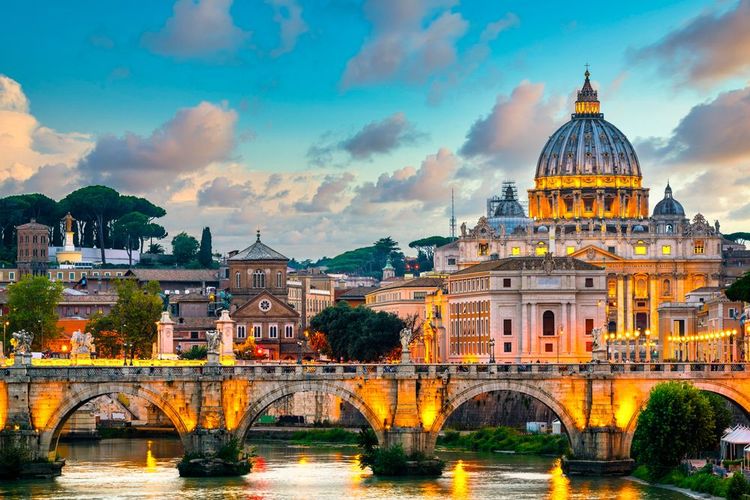Intended as a sepulchral building by the Emperor Hadrian in 125 AD, the Castel Sant'Angelo was subsequently used for a wide variety of purposes. A number of emperors were buried here, including Caracalla, who was buried here for the last time in 217.
The Castel Sant'Angelo has been one of the symbols of the Eternal City for two millennia, and stands out in its centre because of its sheer size. With its cylindrical body resting on a square base, it attracts visitors who have come to discover Rome and its emblems. Initially designed as a resting place for numerous graves, its functions have evolved over the centuries, giving it a unique place in Rome's historical heritage.
Various rooms with well-kept secrets, a privileged passageway several hundred metres long and an angelic bridge make the area a must-see on any visit to Rome, between two culinary delights. On a self-guided or guided tour, explore the living quarters of several popes, in a fortified building whose ochre colours illuminate the city. From the Ponte Sant'Angelo, the arrival is majestic and the leap into the past begins abruptly. Head for the Piazza di Ponte Sant'Angelo!
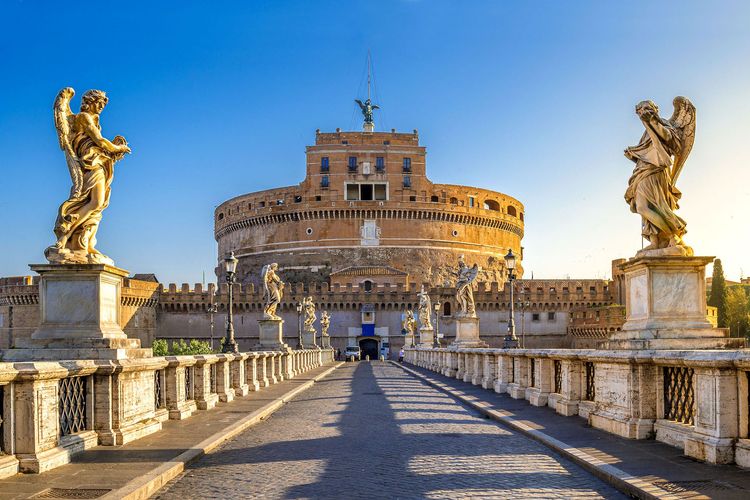
Castel Sant'Angelo as seen from the Ponte Sant'Angelo in Rome
- © Nicola Forenza / ShutterstockThe story of a converted mausoleum
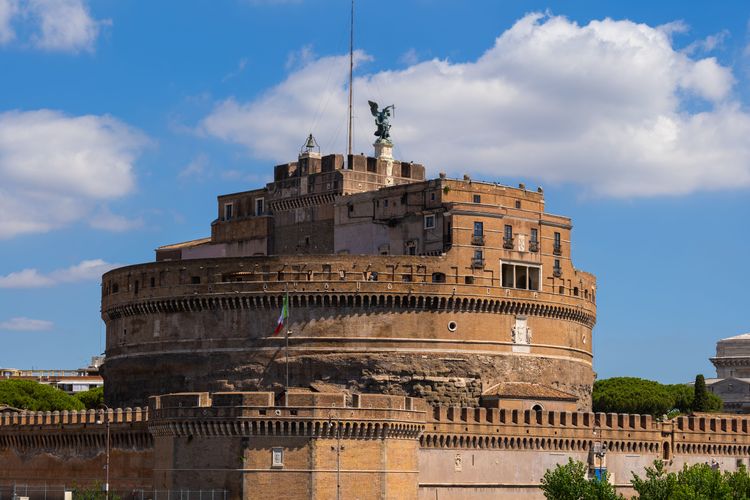
Close-up view of Castel Sant'Angelo in Rome
- © Artur Bogacki / ShutterstockIts initial sepulchral function was lost in 271, when it became a defensive fortress, before becoming part of the Aurelian Wall in 403, to protect the city from barbarian invasions. During the 6th century, an epidemic of plague swept through the Mediterranean countries, while Gregory I was Pope. Legend has it that he saw Saint-Michel announcing the end of the epidemic above the castle; the statue that can be seen at the top of the castle is a reproduction of this miracle.

Statue of Saint Michael on top of Castel Sant'Angelo in Rome
- © MartiniDry / ShutterstockFortress, then prison, then papal residence during the Renaissance, then military barracks after the unification of Italy, this building turned museum is a history book in itself.
You can discover your heritage by climbing the stairs
Today, the castle bears witness to its major history through a museum that houses permanent collections and a succession of contemporary exhibitions.
The bust of Hadrian, the tombs in the mausoleum, the urn room and the impressive Apollo room can all be seen on the first floors, taking visitors hundreds of years into the past.
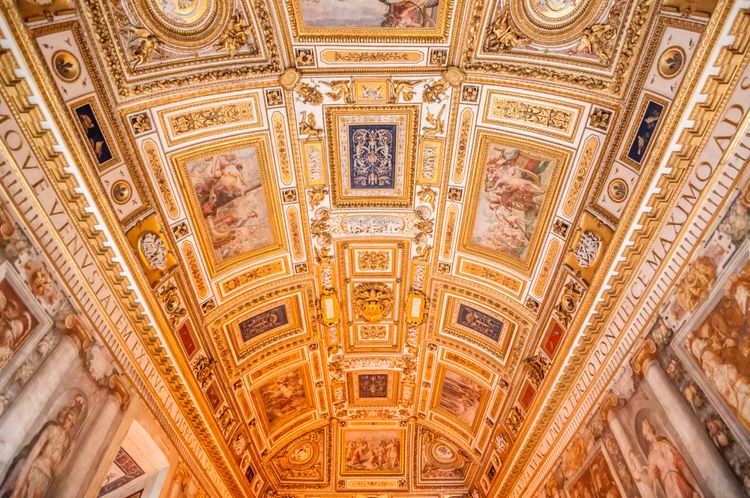
Hall of Apollo in Rome's Castel Sant'Angelo
- © ColorMaker / ShutterstockHigher up in the monument, the papal flats, collections of weapons, frescoes and other sumptuously decorated rooms are open to the curious. The highlight of the show is the terrace on the top floor, with its extraordinary panorama of Rome and its most beautiful landmarks, such as the Pantheon and the Vatican.
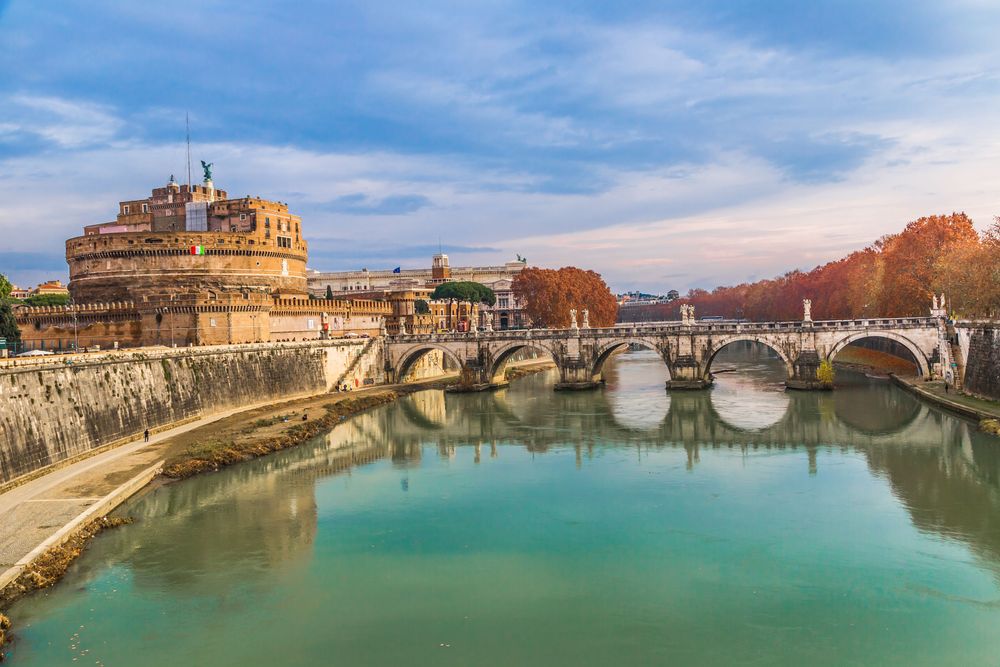 Rome
Rome
Ticket to the Castel Sant'Angelo Museum
Book your ticket to Castel Sant'Angelo and explore the different floors that represent its history and past.Majestic entrance via the Ponte San Angelo
To cross the Tiber and face the imposing monument, take the Ponte San Angelo. As with the castle, the history of this entrance varies from period to period.
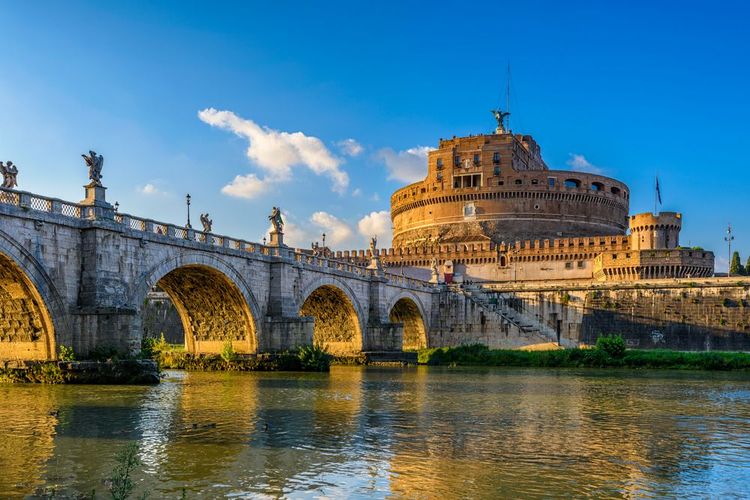
Ponte San Angelo, Rome
- © Catarina Belova / ShutterstockIt was used by thousands of pilgrims on their way to St Peter's Basilica in the Middle Ages, and was restored to its former glory in 1534, after several years of neglect, with the installation of the statues of St Peter and St Paul. The scene of triumphal entries and multiple executions, the renovation was taken in hand by Bernini. The artistic mastery of the Stations of the Cross, adorned with ten angelic statues in honour of Christ's musical passions, was unprecedented. Angel with Column, Angel with Cross and Angel with Crown of Thorns line the path of the bridge, admired daily by hordes of tourists. Once across, we arrived at the foot of Castel Sant'Angelo, with the Via della Conciliazione stretching off to the left and leading to St Peter's Square.
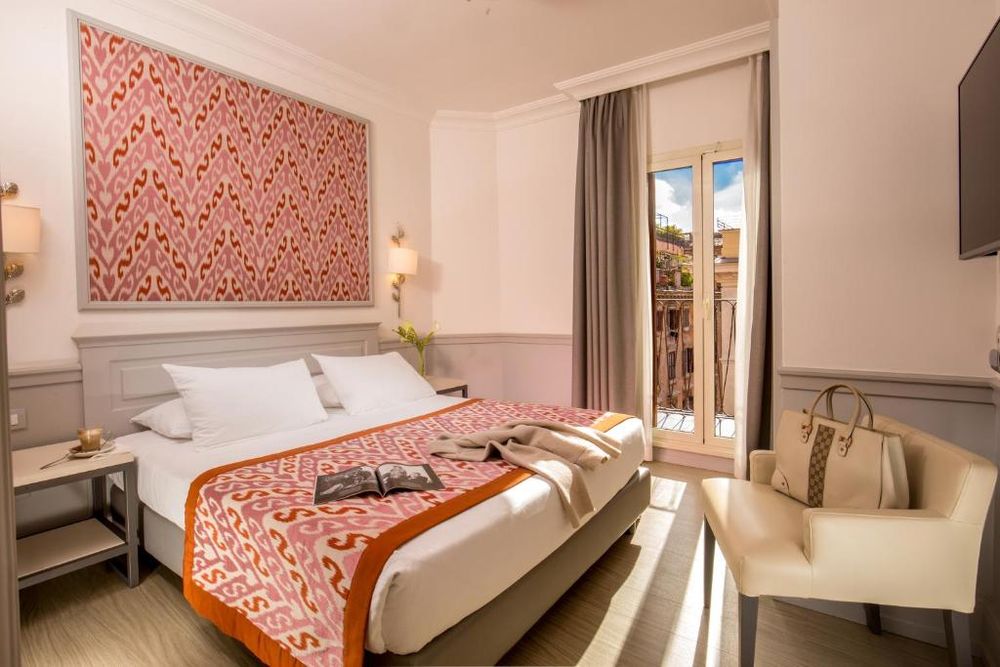 Rome
Rome
Hotel Della Conciliazione
Hotel next to St Peter's BasilicaPassetto di Borgo: between secrets and leaks
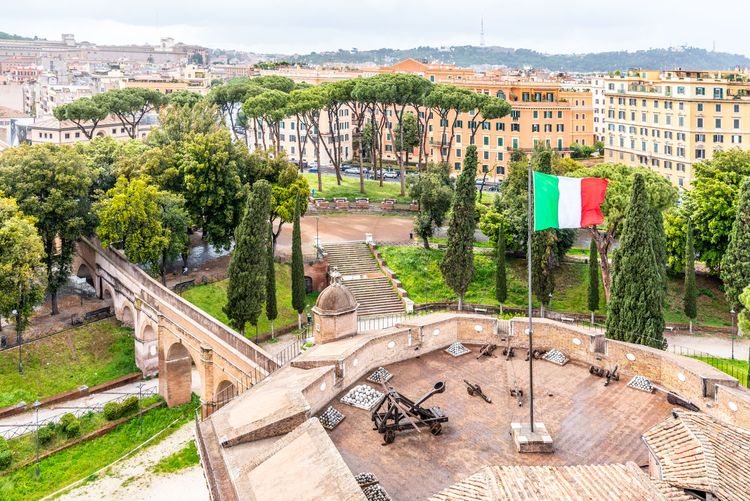
A secret fortified passageway known to the Romans as the Passetto, the Passetto di Borgo links St Peter's with the Castel Sant'Angelo. It was very useful to Pope Clement VII when he fled from the Vatican to take refuge in the Castle during the Lanzichenecchi siege. Today, you can visit part of the 800-metre crossing and follow in the footsteps of the fleeing popes!
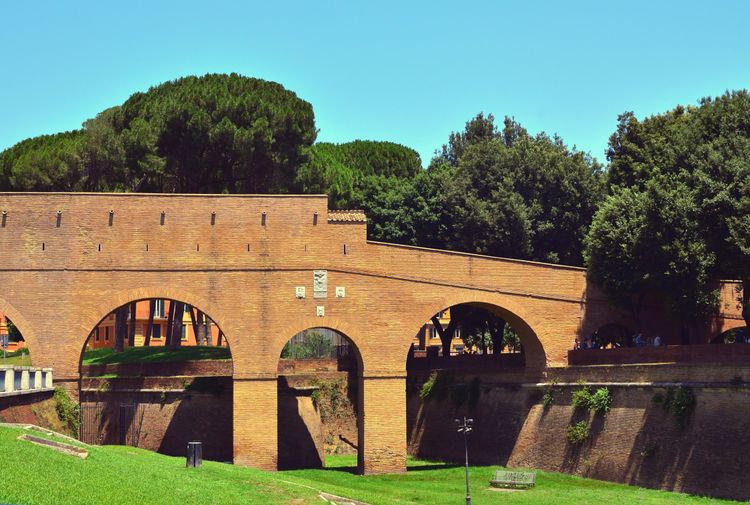
A few metres from Passetto di Borgo, Rome
- © Alexander Trybushny / ShutterstockStop for a meal on the terrace of the Satiricus Ristorante Pizzeria, opposite the security bridge. Pasta, pizzas and meats with Italian flavours are on offer in this singular setting, where history has been built up over several millennia.
📍 Address: Via dei Corridori, 58, 00193 Roma RM, Italy
⏰ Times: 11.30am - 4pm and dinner by prior arrangement
A source of artistic inspiration
Not only is the Castel Sant'Angelo a must-see in Rome, it has also had a major influence on the work of many artists in the world of film and music. Opera buffs will be familiar with the Castel Sant'Angelo; the final scenes of Tosca, directed by Giacomo Puccini, take place there, on the terrace.
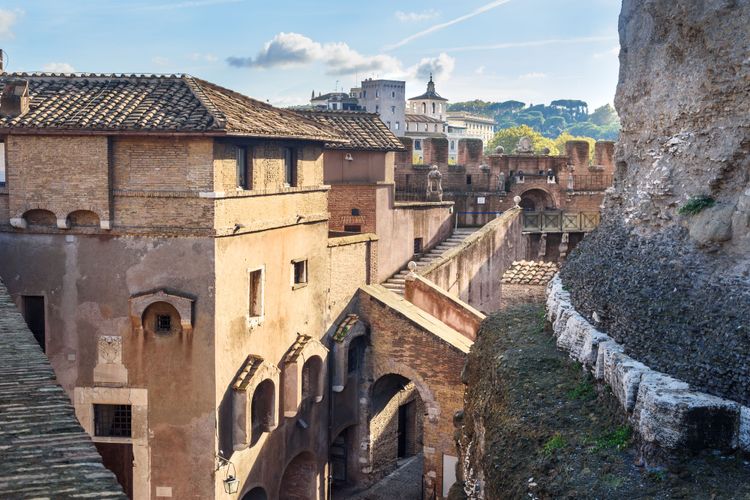
Terrace of Castel Sant'Angelo, Rome
- © Elena Odareeva / ShutterstockIn film, Ron Howard's Angels and Demons was one of the backdrops for the shoot, as was Assassin's Creed in video games. The musical arts have not been left behind, with singers such as Achille Lauro incorporating references into their lyrics. It's a place steeped in history, and one that continues to live on through contemporary staging.
👉 Practical information
📍 Address: Lungotevere Castello, 50, 00193 Roma RM, Italy
⏰ O pening times: 9am - 7.30pm Tuesday to Sunday (last admission at 6.30pm)
👛 Admission: €12 (+ €1 booking fee) full price / €10 (+ €1 booking fee) for 18-25 year olds / Free (+ €1 booking fee) for minors
Access: Ottaviano or Lepanto metro stop
